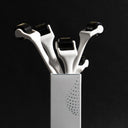Thinning hair is a common concern for many individuals, and the question of whether it can regrow is often at the forefront of their minds. Hair loss can occur due to various factors, including genetics, age, hormonal imbalances, stress, and certain medical conditions. While the prospect of regaining lost hair may seem daunting, understanding the underlying causes and taking appropriate measures can increase the chances of hair regrowth.
Table of content
Will Thinning Hair Ever Grow Back?
In many cases, thinning hair can indeed grow back, provided the underlying cause is addressed and the hair follicles are not permanently damaged. However, the extent of regrowth and the timeframe for it to occur can vary based on the specific circumstances.
Factors Affecting Hair Regrowth
The ability of thinning hair to regrow depends on several factors:
1. Cause of Hair Loss
The cause of hair loss plays a crucial role in determining the likelihood of regrowth. For example, if the thinning is due to temporary factors like stress, nutritional deficiencies, or certain medications, addressing these issues can often lead to hair regrowth. However, if the hair loss is caused by genetic factors or conditions like male/female pattern baldness, the chances of significant regrowth may be lower.
2. Age and Stage of Hair Loss
Generally, the earlier hair loss is detected and treated, the better the chances of regrowth. Younger individuals tend to have more responsive hair follicles, making it easier for hair to regrow. As people age, the hair follicles can become less responsive and more prone to permanent damage, making regrowth more challenging.
3. Extent of Damage to Hair Follicles
Hair follicles are the structures from which new hair grows. If the follicles are still alive and functioning, thinning hair can potentially regrow. However, if the follicles have been damaged or scarred due to conditions like scarring alopecia or certain autoimmune disorders, regrowth may be limited or impossible without medical intervention.
Promoting Hair Regrowth
To encourage hair regrowth, it is essential to address the underlying cause of thinning hair. Here are some strategies that can help:
1. Medication and Treatments
Depending on the cause of hair loss, medications like minoxidil (topical solution) or finasteride (oral medication) may be prescribed to stimulate hair regrowth. Additionally, procedures like platelet-rich plasma (PRP) therapy or low-level laser therapy (LLLT) can be explored to promote hair follicle health and stimulate regrowth.
2. Lifestyle Changes
Adopting a healthy lifestyle can contribute to hair regrowth. Reducing stress, maintaining a balanced diet rich in essential nutrients (like biotin, iron, and protein), and avoiding harsh hair treatments or styles that pull on the hair can improve overall hair health and promote regrowth.
3. Hair Transplantation
In cases of permanent hair loss or severe thinning, hair transplantation procedures can be an option. These involve transplanting healthy hair follicles from other parts of the scalp to the thinning or bald areas, providing a permanent solution for hair regrowth.
Patience and Consistency
It's important to note that hair regrowth is a gradual process and can take several months or even years to see significant results. Consistency and patience are key when implementing hair regrowth strategies. Regular follow-ups with a dermatologist or trichologist (hair specialist) can help monitor progress and adjust the treatment plan as needed.
Conclusion
Thinning hair can indeed grow back in many cases, provided the underlying cause is addressed and the hair follicles are not permanently damaged. By identifying the root cause, adopting appropriate treatments, and maintaining a healthy lifestyle, individuals can increase their chances of seeing their hair regain its fullness and density over time. However, it's essential to have realistic expectations and consult with a healthcare professional for personalized guidance and treatment options.
Why Bio-Pilixin® Activation Serum?
- Help Stop Hair Loss & Regrow Hair: Bio-Pilixin® is a clinically tested serum that helps reduce hair loss and promote new growth in as little as 45 days.
- Plant-Powered & Drug-Free: This safe formula uses plant growth factors derived from stem cell technology to nourish hair follicles, avoiding harsh chemicals.
- Visible Results: Users report a reduction in hair loss and increased hair density in clinical tests.
- Easy to Use: Simply apply daily for noticeable results.
Experience the difference Bio-Pilixin® can make and feel confident about your hair again.
Read more:
- Dermatologist's Guide To The Best Derma Roller For Hair Growth
- 11 Best Shampoos For Thinning Hair Due To Menopause & Itchy Scalp
- 19 Best & Proven Shampoos For Hair Thinning In 2024
As your leading source for hair health information over the past 4 years, we never compromise on accuracy. When it comes to your health, you deserve information you can truly rely on - and earning your trust is our top priority.
Here's how Scandinavian Biolabs ensures every piece of content meets the highest standards of accuracy and integrity:
- Credentialed Experts: Our reviewers are actively practicing doctors and medical researchers
- Stringent Reviews: Content undergoes rigorous editing by subject specialists and review by a practicing doctor.
- Evidence-Based: We rely on well-established research from trusted scientific sources like peer-reviewed journals and health authorities.
- Full Transparency: Our editorial standards, writer credentials, reviewer credentials, correction process, and funding are all publicly documented.
- Independent Voice: While we do promote products, we operate in a vacuum to business operations. Our main goal is just an unwavering commitment to providing medically-sound guidance.
You can count on Scandinavian Biolabs to consistently deliver the trustworthy health information you deserve. Read our Editorial Standards.






